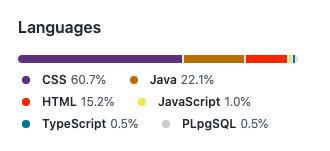Spanish Civil War Database IHR.WORLD

From github.com
Spanish Civil War Database IHR- This readme file has not been written by the developer nor another developer. This database is organised in tables and columns. Because of its complexity, tables have been structured in a certain way. Each Document or record table -such as https://scwd.ihr.world/es/document/86677 has only a few columns/ fields : document_id, subject_name, dataset_id, time of creation – There are 650k Documents in the dataset at the time of writing. Each Document is related to a document_property_value table. This table has the following columns / fields: document_property_value_id, connected to a single document_id, to several dataset_property_ids (some of them visible in the document, some of them not visible) and to value. There are about 6 million document_property_values or cells in this table. Each Dataset -such as https://scwd.ihr.world/es/dataset/10 – has the following columns/ fields: dataset_id and then the number of dataset_property columns in the spreadsheet that gave origin to each dataset: name, date of birth, date of death, place, etc – There are +30 datasets at the time of writing. Each Dataset has a series of dataset_property -such as the original column name for municipio de nacimiento or provincia de nacimiento in the above Document example- Each dataset_property has a dataset_property_id, a dataset_id, a dataset property name (in 3 languages) and a quality of is_public (or not) – There are 667 dataset-properties at the time of writing. Our mid-term objectives are: (1) to try to reduce the number of dataset_propertys by harmonizing the names of spreadsheet columns (of the excel files that we use to integrate new datasets) that may apply to exactly the same concept (2) to find which other type of dataset_property would be interesting to make visible (places or dates) apart from subject_names (3) to improve the search engine and accuracy of results (4) to harmonize place names by matching the existent ones to an opendata file containing geographical information (to connect names of smaller areas such as villages or towns to larger areas) (5) to explore geolocalization